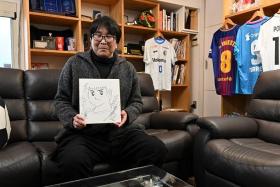'Surviving The Syonan Era' would have been a better name
This year marks the 75th anniversary of the Fall of Singapore.
Over the past month, there has been active discussions and public outcry regarding the use of the name "Syonan Gallery".
Given the historical context and associations linked to the term Syonan, it is good that the concerns have been addressed and the name "Syonan Gallery" has been replaced.
As Prime Minister Lee noted, "we must never forget the events that so profoundly impacted our lives and shaped our society".
It helps for Singaporeans to have a historical understanding of the use of the term Syonan in the history of Singapore.
Singapore was renamed Syonan-to in February 1942 when the Japanese conquered and occupied Singapore, during the Japanese Showa period or reign of Emperor Hirohito.
Syonan-to is popularly known as "Light of the South" or more literally and accurately known as the "Brilliant Southern Island". According to The Syonan Times published on Feb 21 1942, Syo means "bright" or "brilliant" and Nan means "south".
Hence, Syonan means "Brilliant South", with To meaning island. Syonan-to would then mean "Brilliant Southern Island".
When Singapore was Syonan-to, thousands of lives were lost due to the Sook Ching massacre and deprivations of war. The name Shonan or Syonan was also used in various contexts during this occupation period.
The use of the term Syonan brings to mind the Japanese military World War Two efforts in Singapore. Several major public sites also bore the name Syonan.
In April 1942, the Japanese started building a Japanese Shinto shrine at MacRitchie Reservoir named Syonan Jinja.
This shrine was modelled after the Ise Grand Shrine in Japan. The local people of Singapore were organised and led to Syonan Jinja to pay respects, on certain days such as the opening of the Syonan Jinja on Feb 15 1943.
Another site that used the name of Syonan is the Syonan Chureito, which was built to commemorate the Japanese soldiers who perished in the battle for Singapore.
The site was at the Bukit Batok hilltop, overlooking the Bukit Timah where some of the most intense battles occurred between the British-led forces and Japanese Imperial Army.
A British Memorial Cross was also erected nearby to commemorate the deceased British soldiers.
Annually, on Dec 8 during the Japanese Occupation period, local representatives including the youth would have to participate in events held at the Syonan Chureito and Syonan Jinja to pledge loyalty to the Japanese and pay respects to the deceased Japanese soldiers.
The venue of the Synonan Chureito is not far from the Former Ford Factory. The original Japanese structures at these sites bearing the name of Syonan have been destroyed.
The efforts of the Japanese military government to name public sites, as well as the local newspapers, Syonan, were associated with the efforts to impose Japanese authority and control.
Over the years, the term Syonan has been closely associated with the pain and trauma of the Japanese Occupation.
This narrative has also been reinforced in the way history has been taught in Singapore schools.
Not surprisingly, there was a strong reaction to the name "Syonan Gallery".
Rather than naming it Syonan Gallery, another option could have been "Surviving the Syonan era: War and its legacies".
This incident highlights the importance of history education and presentation of information, as well as a better knowledge and appreciation of our past, coupled with thoughtful responses to our history and people.
The ongoing education and engagement with our history can continue with a visit to the exhibition, "Surviving the Japanese Occupation: War and its Legacies" at the Former Ford Factory.
Edmund Lim is pursuing his PhD in History. He has researched on Japanese war memorials in Singapore. He is also an author.
Get The New Paper on your phone with the free TNP app. Download from the Apple App Store or Google Play Store now


